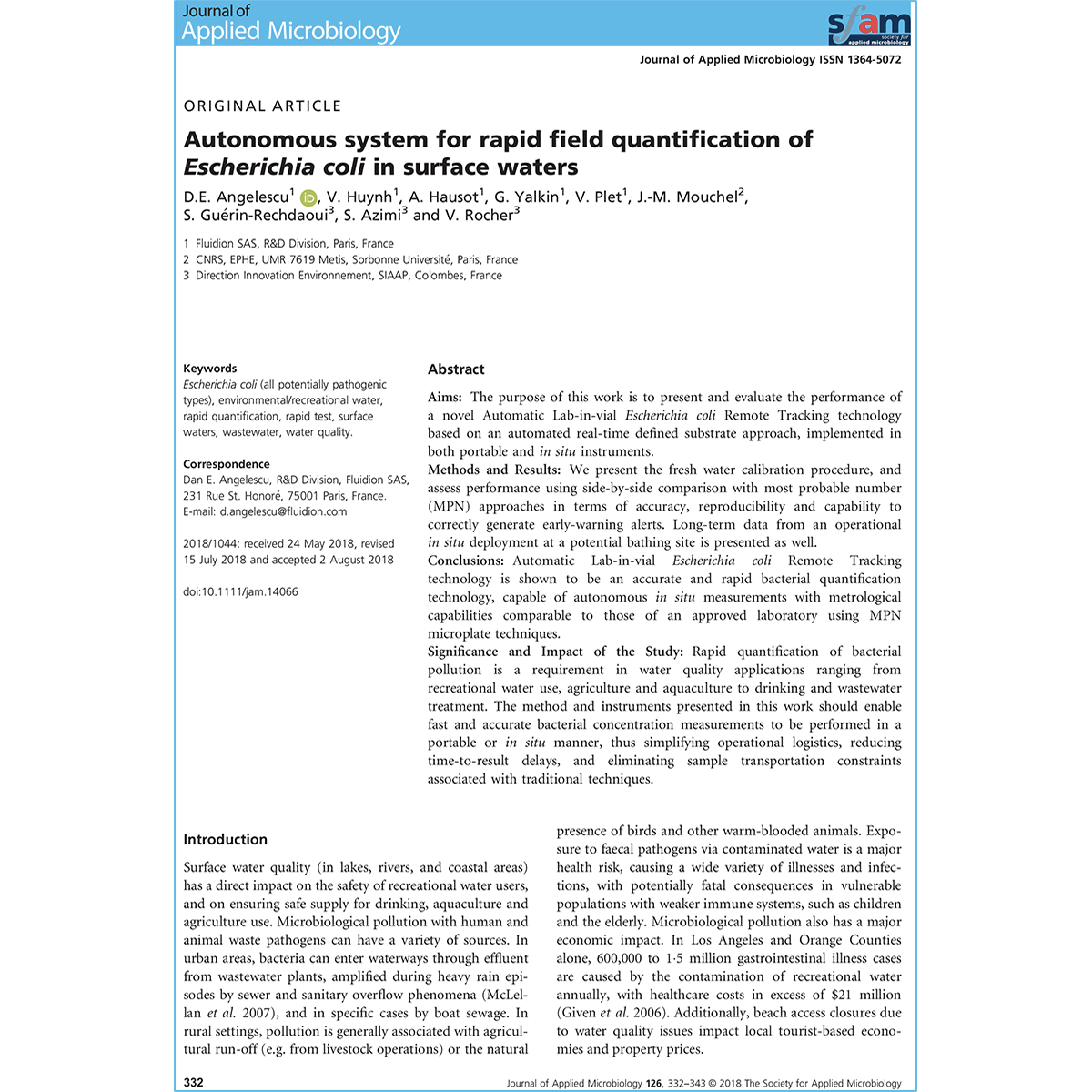
Autonomous system for rapid field quantification of Escherichia coli in surface waters
Journal of Applied Microbiology article "Autonomous system for rapid field quantification of Escherichia coli in surface waters", VOL. 126, P. 332 (2018)

JOURNAL OF APPLIED MICROBIOLOGY: “AUTONOMOUS SYSTEM FOR RAPID FIELD QUANTIFICATION OF ESCHERICHIA COLI IN SURFACE WATERS” (2018)
"Autonomous system for rapid field quantification of E. coli in surface waters" : A scientific article published by fluidion in collaboration with SIAAP (the Paris wastewater agency) in the well-respected Journal of Applied Microbiology (doi: 10.1111/jam.14066). It presents the ALERT E.coli quantification technology, focusing specifically on its metrological validation through side-by-side comparison using most probable number (MPN) techniques, and on applications related to rapid in-site monitoring in diverse fresh water matrices.
Lab-equivalent, autonomous in-situ measurements of E.coli for fast and accurate water quality monitoring.
Key points:
- The methodology presented is based on a combination of fluorescent wastewater tracking, rapid microbiological measurements with ALERT technology, and automated sampling with Fluidion's aquatic drone to provide a rapid, accurate and affordable in-situ microbiological assessment of pollution sources on river ecosystems.
- Phase 1 of the study showed that there is considerable variability in E.coli concentrations in graywater discharged from houseboats. These can vary by a factor of 10⁵. Wastewater shows high concentrations with low variability (within a factor of 10).
- Phase 2 of the study demonstrated that the methodology employed allows for the rapid identification and accurate measurement of the impact of a discrete pollution event at multiple points in the river.
- In Phase 3, a total of 182 E.coli measurements were taken over the course of one month, with an average of 6 daily measurements. The data collected showed the positive impact of rainfall events on the increase in E.coli concentrations, and also that the concentrations measured upstream and downstream followed the same trends without significant deviation.

